The New Albishorn Type 10 Chronograph, The Imaginary Ancestor of the Type 20
Albishorn presents its second chronograph, an imaginary ancestor of the famous military pilot's chronograph.
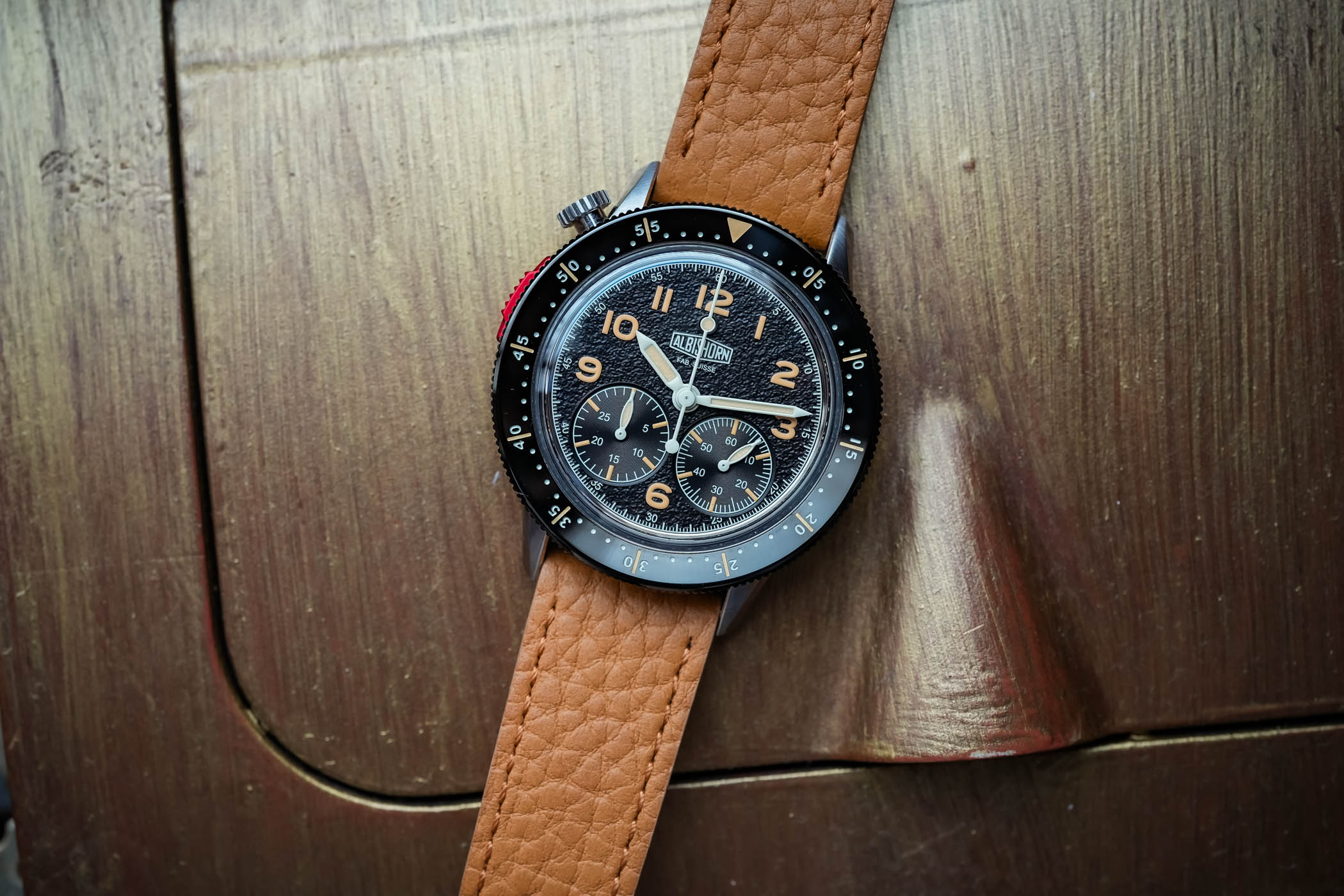
What if…? This simple statement could easily summarize what Albishorn‘s founder Sébastien Chaulmontet wants to achieve with the brand, or “Imaginary Vintage” watches as he likes to call it. Things started with the appealing Maxigraph, or what a modern regatta chronograph would have looked like in the 1930s. Now, Albishorn takes flight, and Chaulmontet creates another vintage watch that never existed. It’s named the Type 10 Chronograph, and it’s meant to be the predecessor of the emblematic Type 20 chronograph, hypothetically crafted in 1948, as the missing link between the dashboard instruments and the famous flyback military/pilot wrist chronograph. A bold idea, one that will surely provoke discussions, but also a demonstration of creativity.
What’s important to know about Sébastien Chaulmontet, the man behind this recently created brand Albishorn, is that he has quite a track record. Chaulmontet has been the Head of Innovation and Marketing at Sellita Watch Co. SA and Manufacture AMT since 2017. Before that, he oversaw innovation and product development at Manufacture La Joux-Perret SA and was in charge of the revival of Arnold & Son and Angelus. But he is, first and foremost, an avid collector of vintage chronographs, and he knows a thing or two about historical watches.
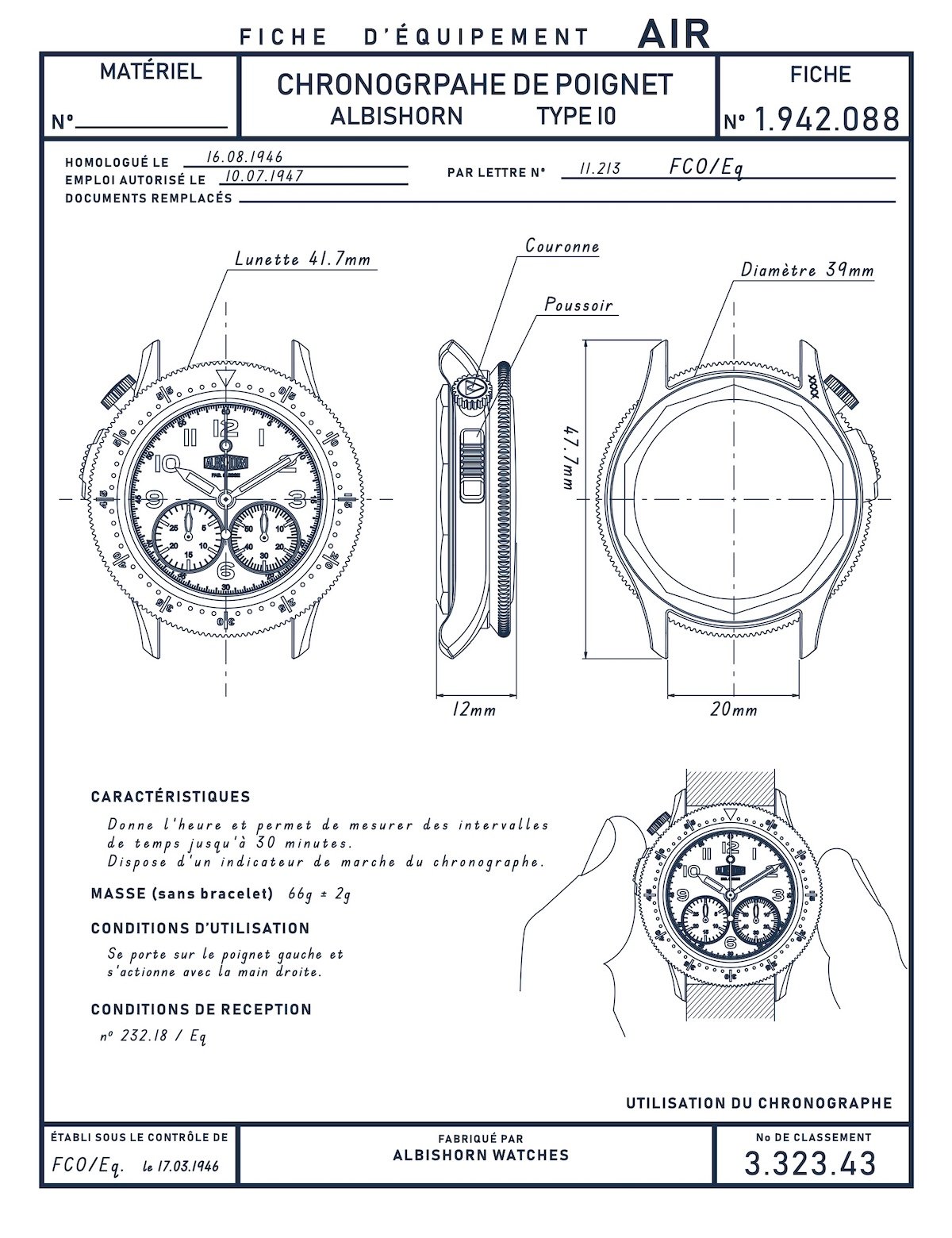
Now, while the Maxigraph was an imaginary vision of a potential 1930s regatta chronograph (with a bit of Rolex Zerograh vibe), the Albishorn Type 10 touches on a highly important topic, that of the most emblematic military French watch, the Type 20. And just for that reason, we’re moving into far more sensitive terrain – and Chaulmontet is very much aware of that and completely assumes his position and choices. The whole idea here was to imagine what COULD (important word) have been the ancestor of the Type 20, the flyback chronograph conceived for several branches of the French army in the early 1950s and manufactured by Breguet, Airain, Mathey-Tissot, Dodane, Auricoste and Vixa (and some of them still producing modern watches inspired by past models). The result: the Albishorn Type 10 Chronograph.
While the first military Type 20 chronographs (not the Type XX, which was the civilian version) were conceived around 1952-53, the Albishorn Type 10 has been imagined as a watch from 1948, knowing that the Type 20 does not have a direct predecessor. “The challenge was to develop a timepiece that would be period-correct and aligned with the era of the 1940s while meeting the requirements and expectations of pilots of that time,” says Chaulmontet. One main difference with the Type 20, the Type 10 is a classic monopusher chronograph that does not feature the emblematic “retour en vol” or flyback function. It does, however, have a few tricks up its sleeve that make it unique.
Most of the case of the Albishorn Type 10 is taken from the Albishorn x Massena LAB Maxigraph, sharing the same central element measuring 39mm in diameter and made of satin-finished steel, with polished lateral bevels. Proportions and specs are reasonably pleasant for a chronograph, with a total thickness of 12mm, a length of 47.7mm and a water-resistance rating of 100m. There are several unique elements to this watch – some of which are shared with the Maxigraph – such as the crown placed at 10:30 and next to it a large, well-integrated rectangular and notched red aluminium monopusher to activate all of the chronograph’s functions (start-stop-reset) – which is done by using your thumb and proves very practical. Simply rotating a movement can sometimes result in great ergonomics… The right side of the case is free of any element, adding to the overall comfort.
Framing a vintage-looking box-shaped sapphire crystal is the all-important bezel, as you would expect from a pilot’s chronograph, with bi-directional rotation. Made of steel and coated with glossy black DLC, it features a fully graduated 60-minute scale with lacquered numerals and SLN-coated markers. This graduation is another important difference with the Type 20s, most of them featuring a 12-hour scale – save for Gen2 Type 20 models with a 60-minute blackened bezel and Gen3 Breguet Type XX from the 1990s and 2000s. The bezel is also concave and larger than the case, at 41.7mm in diameter – adding more visual presence without making it larger on the wrist.
Let’s now move to the dial, as it’ll be the talking piece here. At first glance, there’s no denying the military inspiration, with a strong focus on legibility – black base, anti-reflective grained surface, large luminescent Arabic numerals and hands… Also, despite crucial differences, the connection between the Albishorn Type 10 and older Type 20 watches is rather easy to make (identical shape of the hands, identical style for the sub-counters and subsidiary hands, same style for the numerals). But we inevitably need to talk about the sub-dials. While the vast (understatement) majority of chronograph watches rely on counters at 3 and 9 o’clock (sometimes 3-6-9, sometimes 6-9-12), the Type 10 does things in a more original way.
With the idea of creating a dashboard-type design (which connects this watch to old Breguet dash instruments such as the Type 11, for example) and by rotating the movement, the small seconds and 30-minute counters are placed respectively at 4:30 and 7:30. I won’t hide the fact that this is a highly peculiar style, which will provoke debate. Since it breaks the norm of most chronographs, it takes time to get used to this visual (un)balance… Having seen the watch a couple of months ago, I’m more used to it now and, despite my sheer love for the Type 20 watches, and the fact that I’ve been rather hard on Chaulmontet when I first saw the watch (you know, this happens when someone touches an icon…), I do think this watch has great personality and appeal. It’s unconventional, quite quirky, but also cool in its own way – if you can get past the whole “disrespect” towards the Type 20… Or maybe it’s not that disrespectful after all…
Just like the Maxigraph, the Albishorn Type 10 relies on a proprietary chronograph movement. This hand-wound chronograph and COSC-certified movement is built on a modified 7750 architecture. The position of the sub-dials is easy to understand when looking at the position of the crown and pushers, as it’s the same as a monopusher SW500 (Sellita’s clone of the 7750) but rotated by 135 degrees. Besides the original position of the sub-dials, it’s also fairly thin at 5.70mm (vs. 7.00mm for a hand-wound SW500m), thanks to some work done on the plates and the length of the pivots. It boasts a generous 65-hour power reserve.
It also comes with a patented feature, a chronograph function indicator that takes the shape of a dot above the logo at 12 o’clock (which is hidden when the lollipop central seconds hand is stationary). It lets you check that the chronograph is functioning correctly. The indicator displays the three chronograph states – reset, start and stop in three different colours: black, red and white, respectively.
Albishorn introduces two versions of the Type 10 – the Classic with a black dial, as photographed here, and the Sihlwald, a more modern take with a green dial, red central seconds and bronze crown. To each his own, but I do think the black makes the most sense. Delivered with two leather straps, the Albishorn Type 10 Chronograph will be available exclusively online at www.albishorn-watches.ch. While not a limited edition, only 25 pieces of each version will be released initially. Sales will open on Monday, October 21, 2024, at 3PM (Europe time). It will be priced at CHF 3,950, excluding taxes.
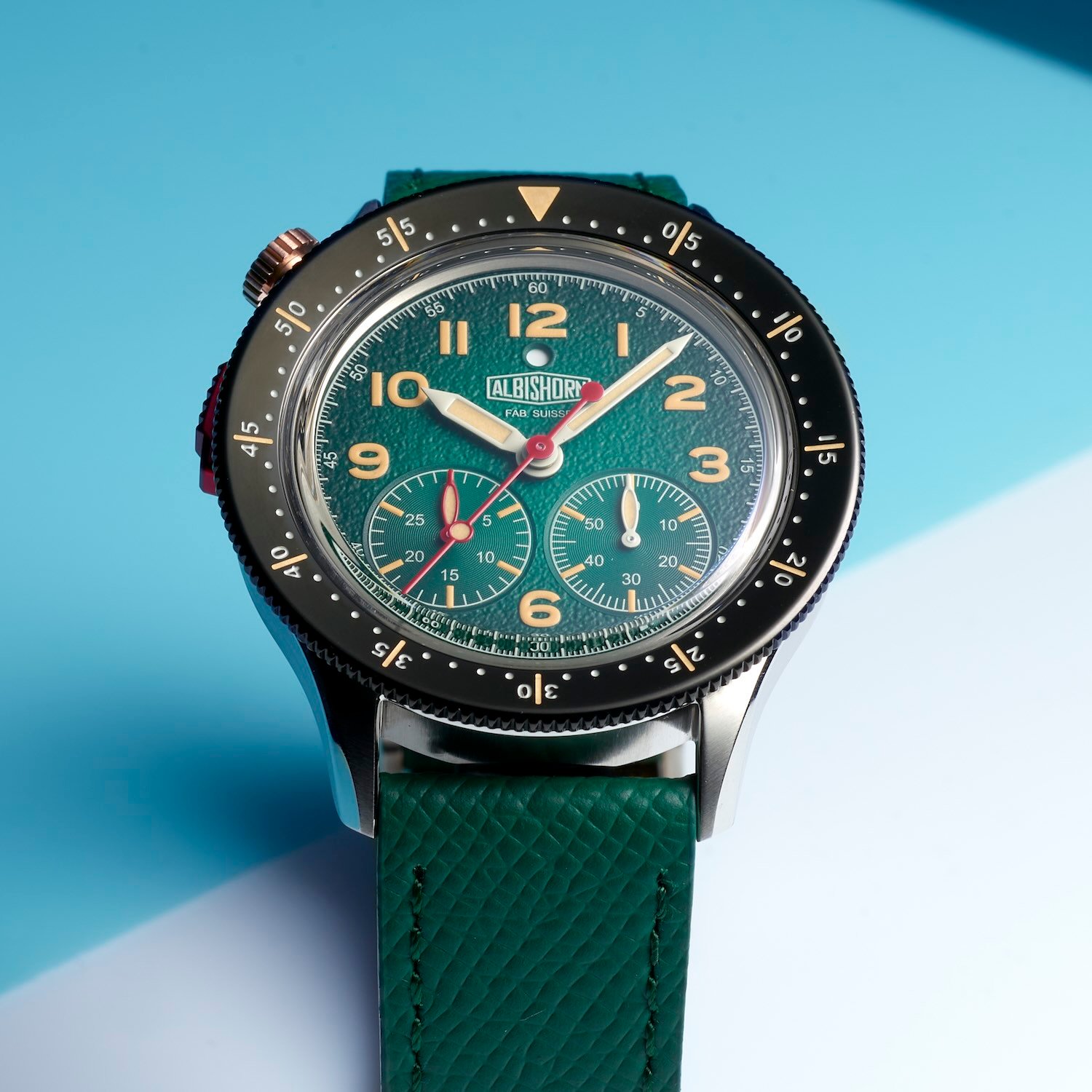
Now, on a personal note, as a fan of the Type 20 and (I guess) a fairly knowledgeable person on this specific topic, I somehow wanted at first to dislike this Albishorn Type 10. While I still have to fully understand the concept, I must admit that Sébastien Chaulmontet and Fabien Collioud (head of design) have done quite an impressive creative job here. Whether it can realistically be seen as an ancestor to the Type 20 is a question that will remain without a definitive answer (isn’t that the idea of “imaginary” watches?), yet the whole watch and its quirkiness work. And there’s no denying a very pleasant quality, with advanced work done on the movement too. The price is not cheap, but still fairly acceptable. So all in all, not too bad Sébastien, not too bad (he’ll understand here that it’s my way of giving the Type 10 my stamp of approval).
For more details, visit www.albishorn-watches.ch.

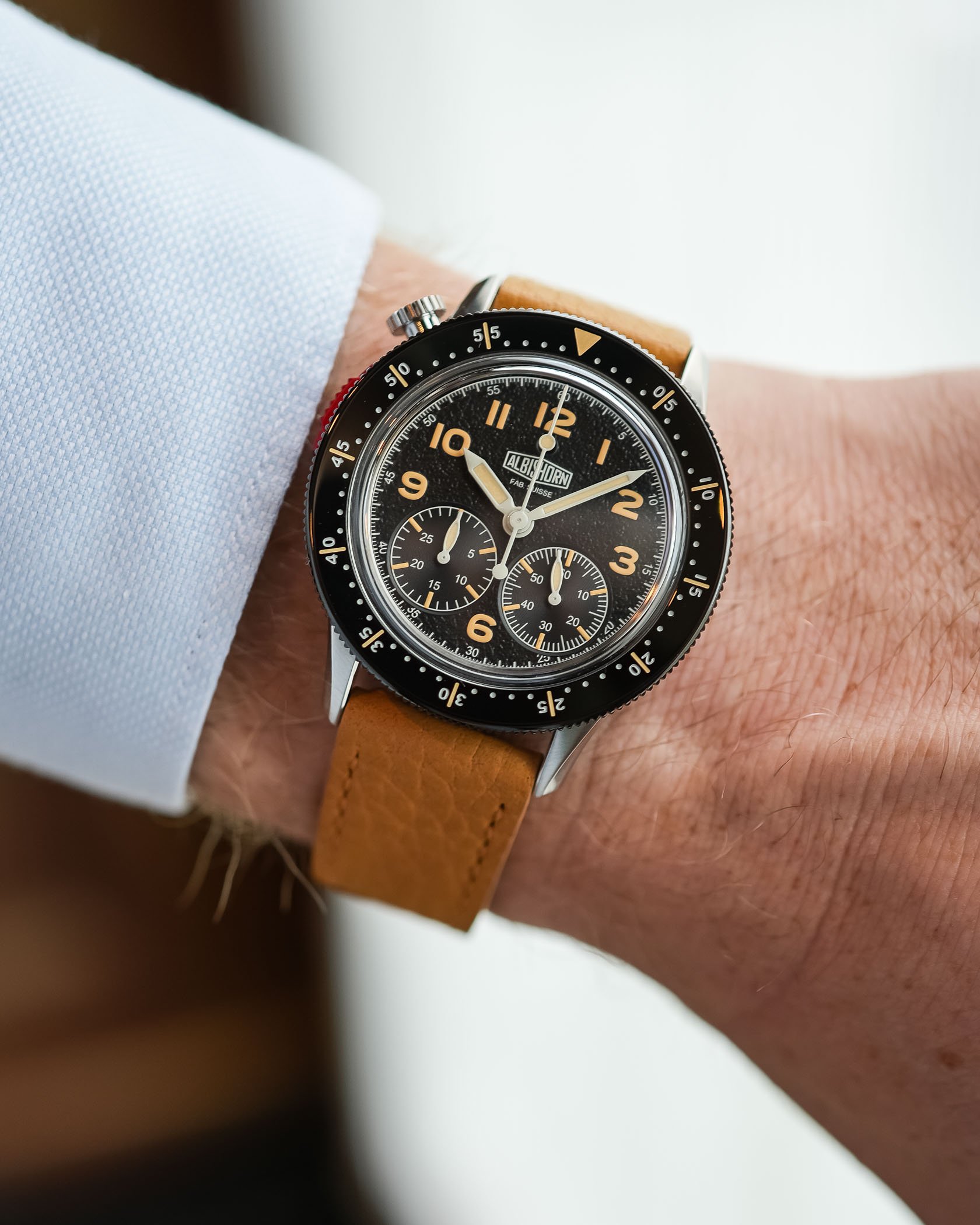
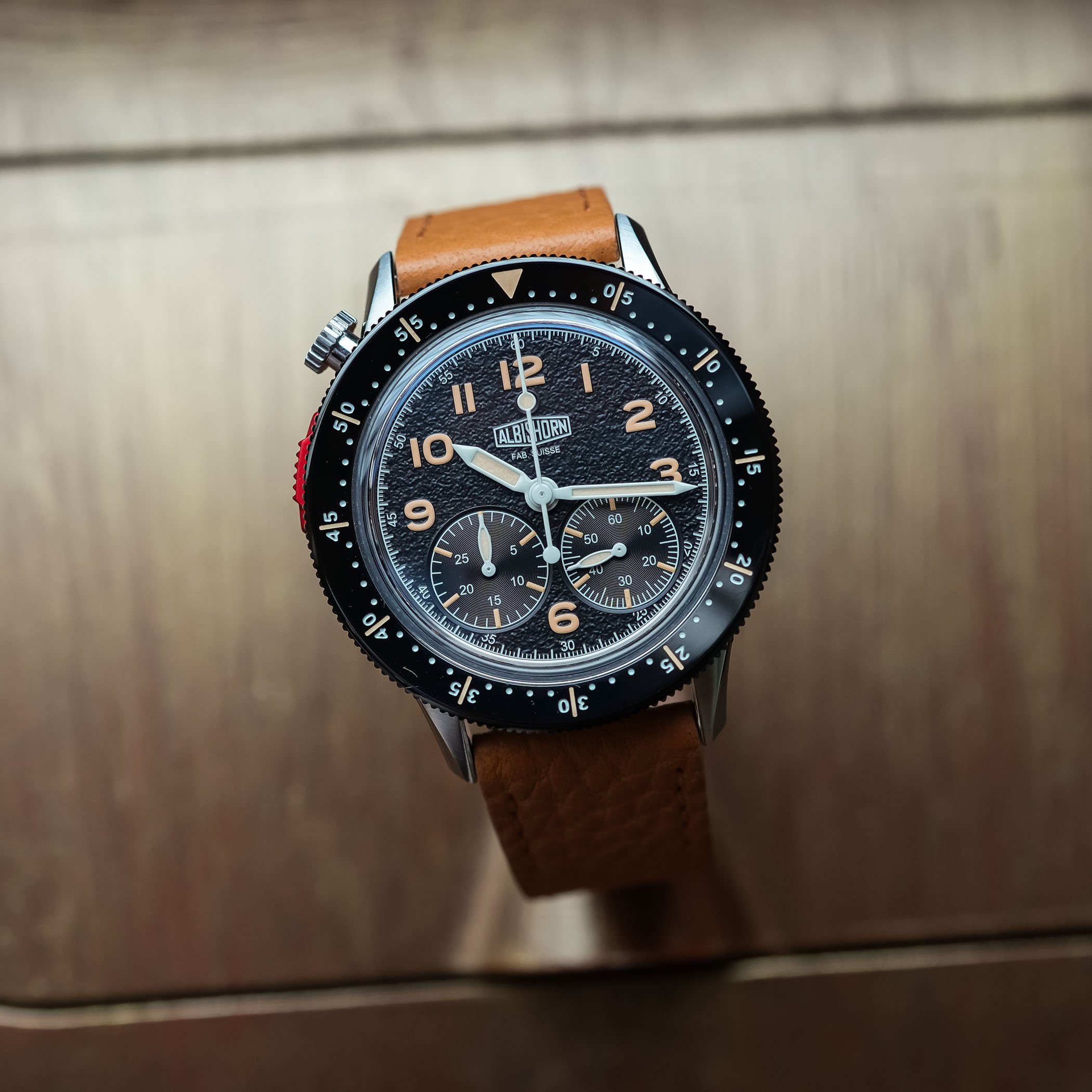
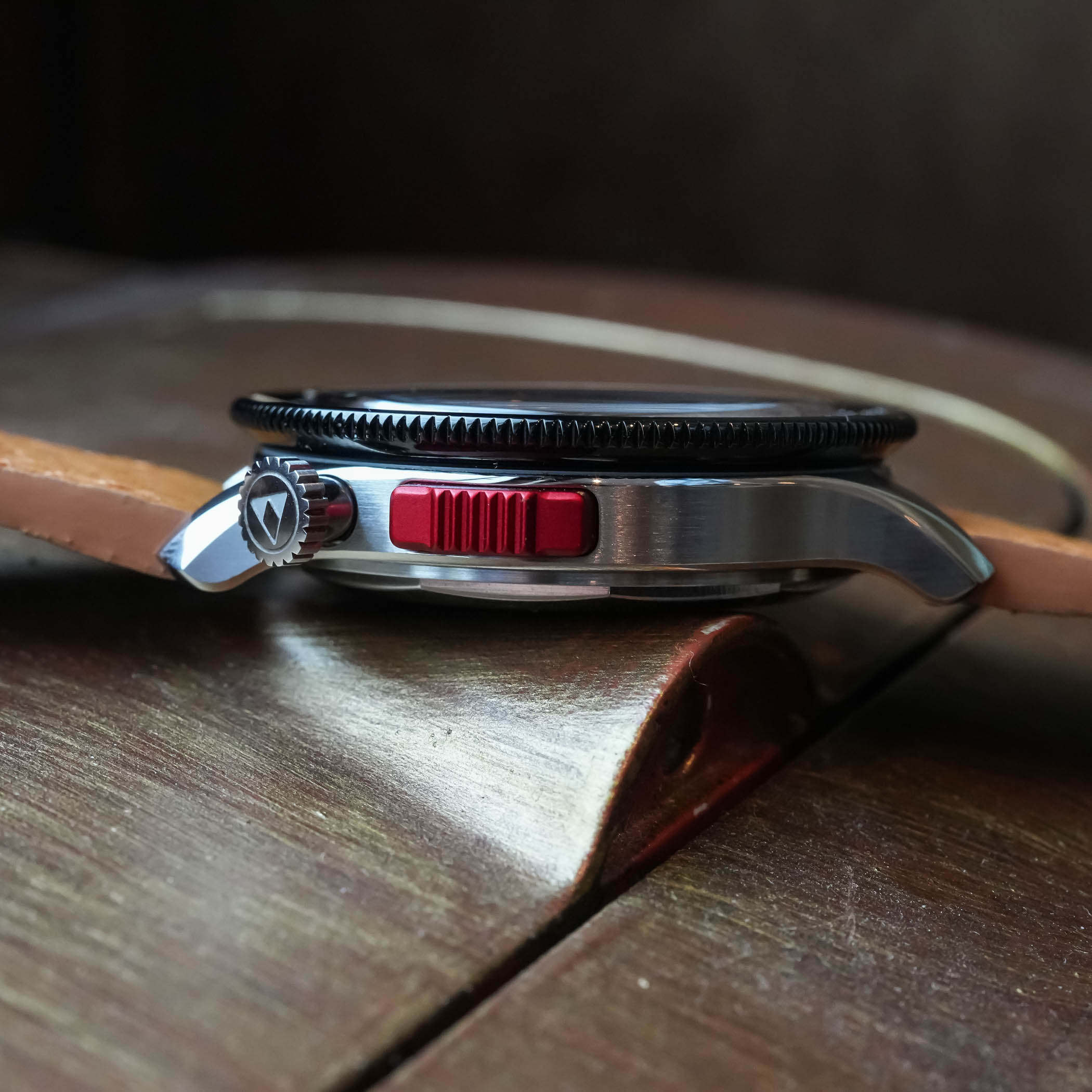
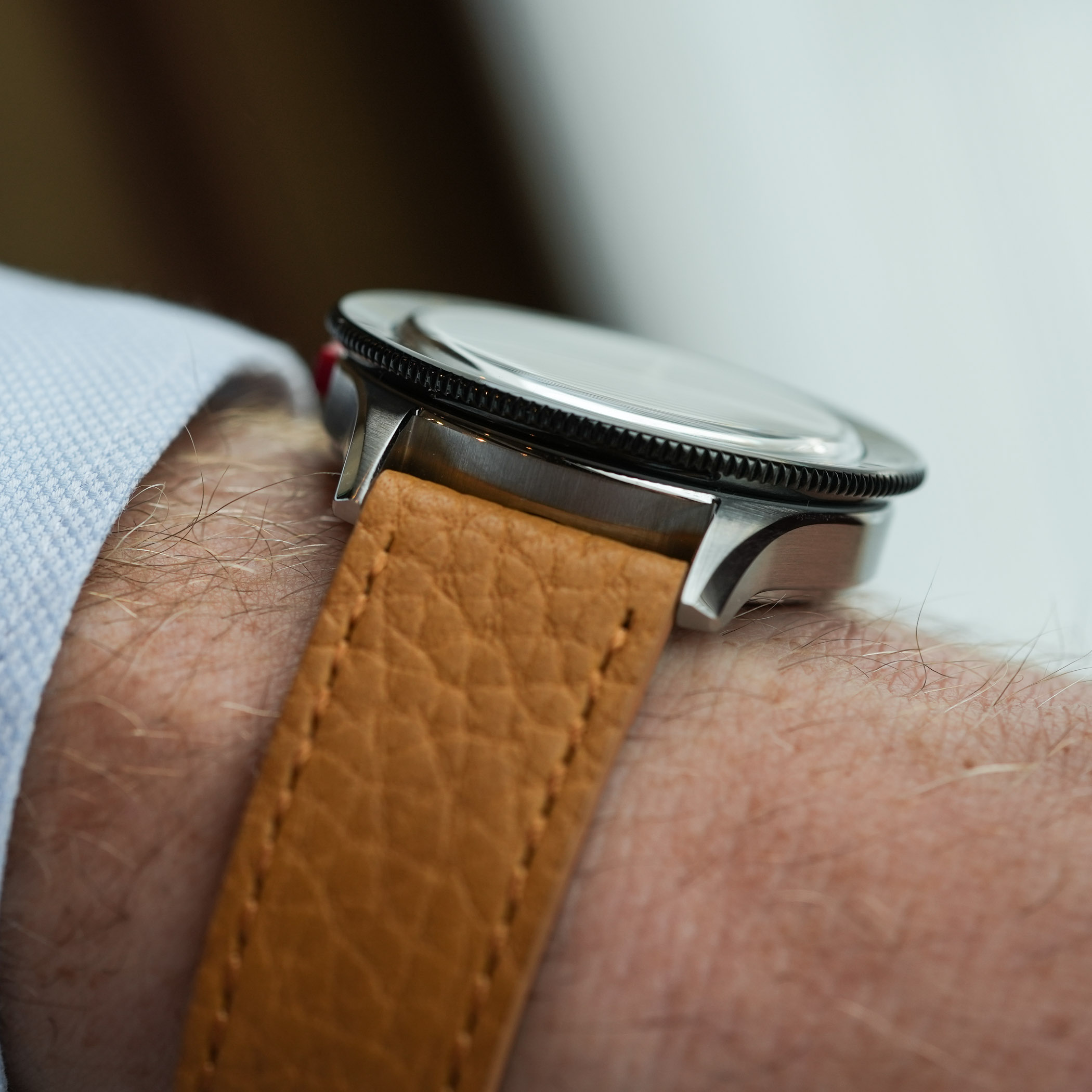
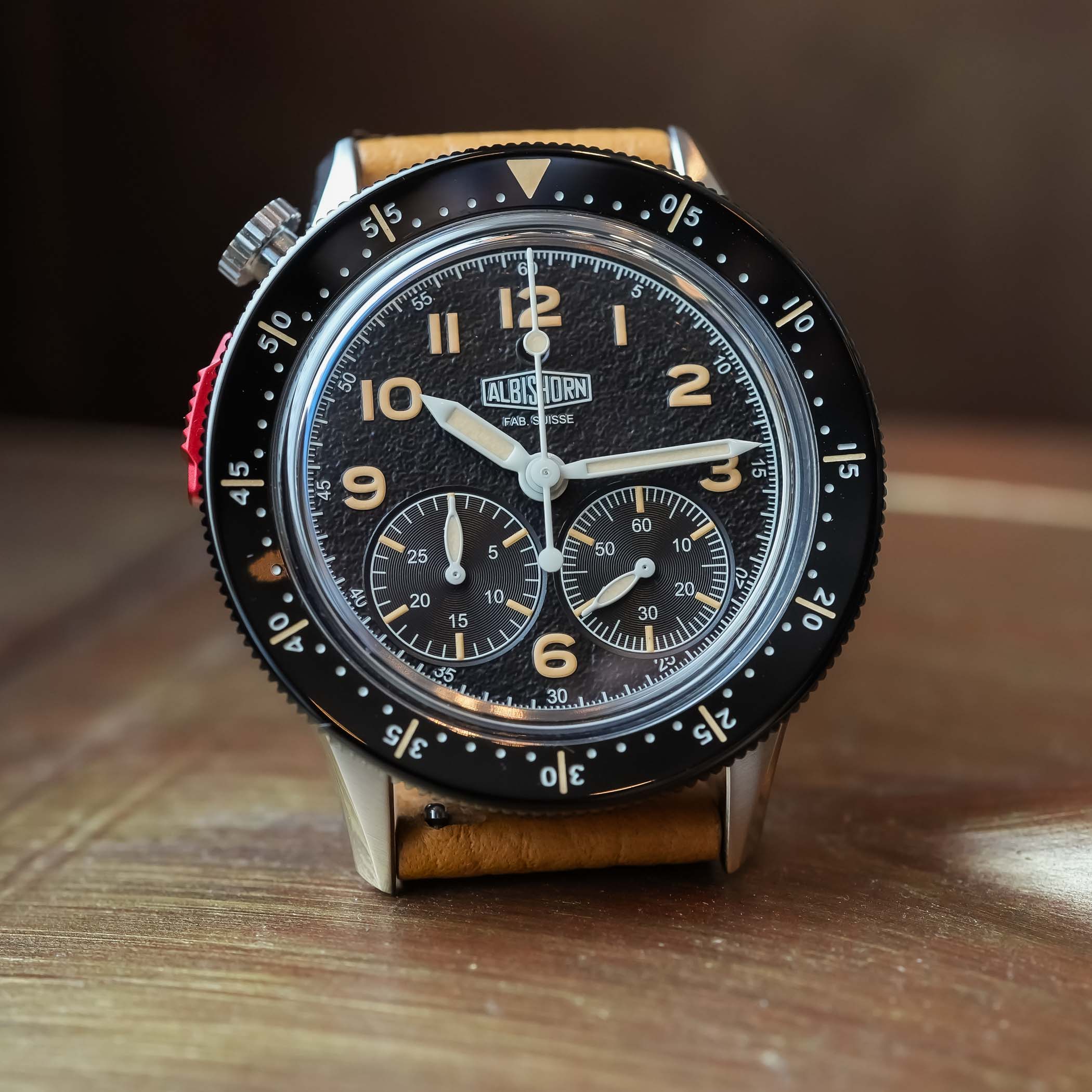
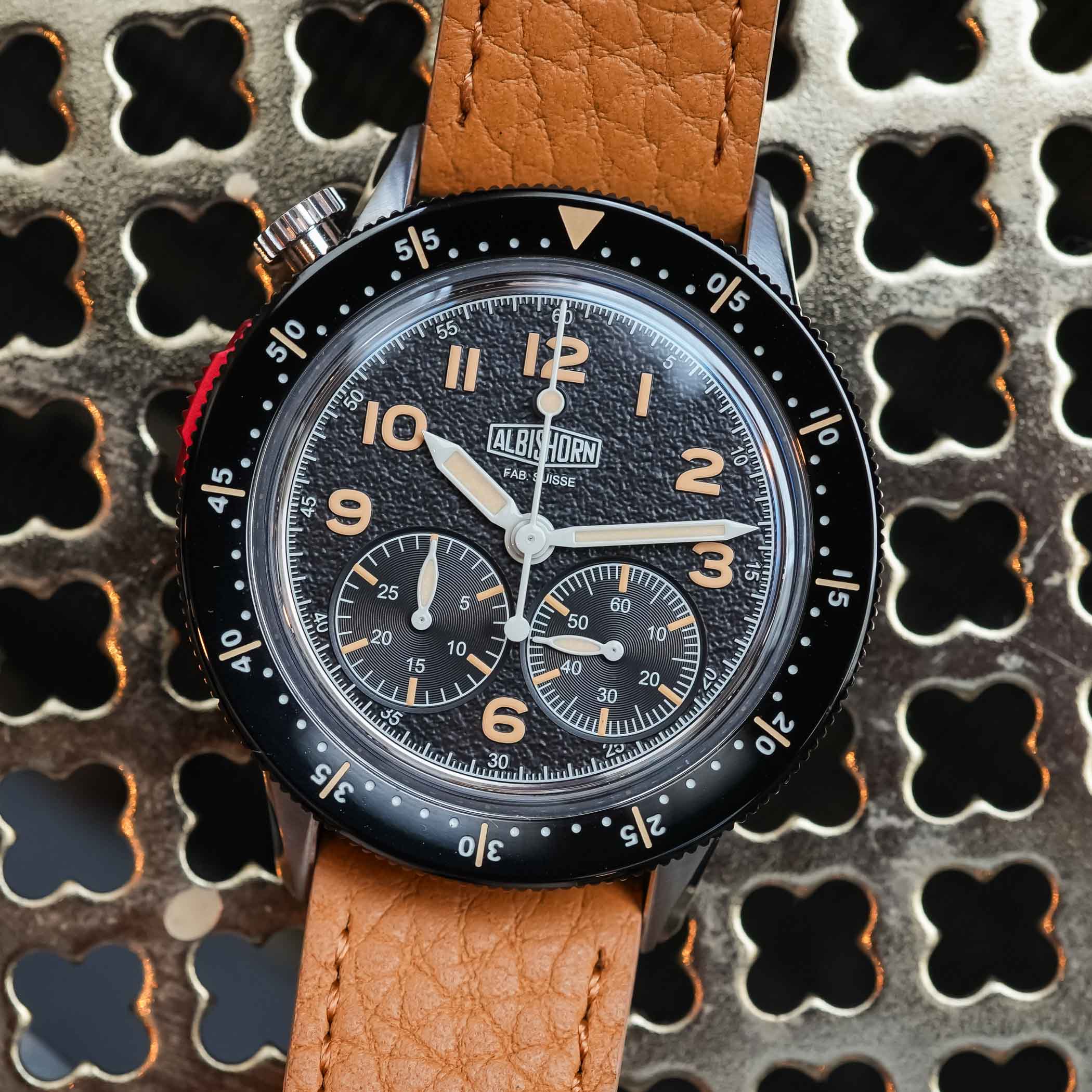
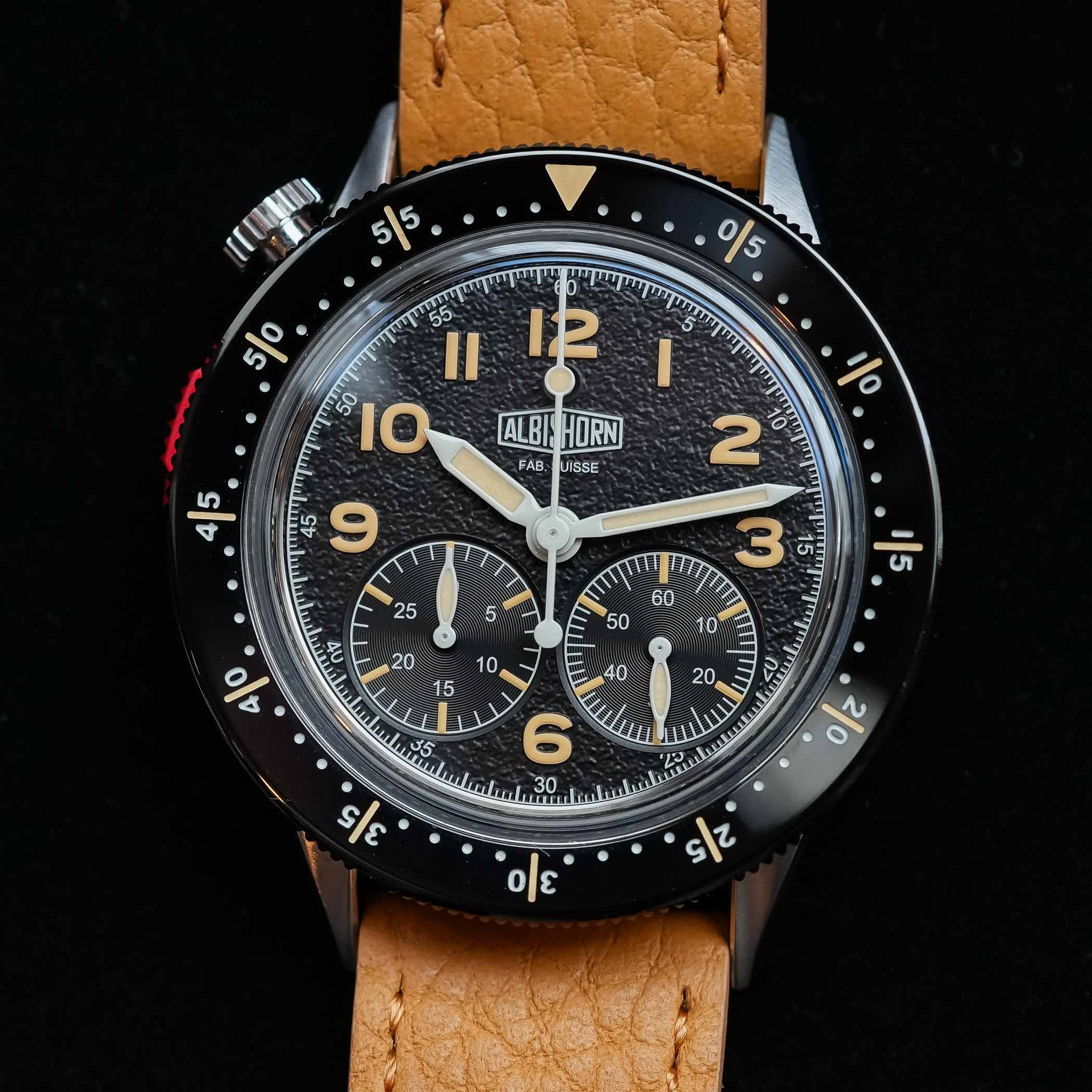
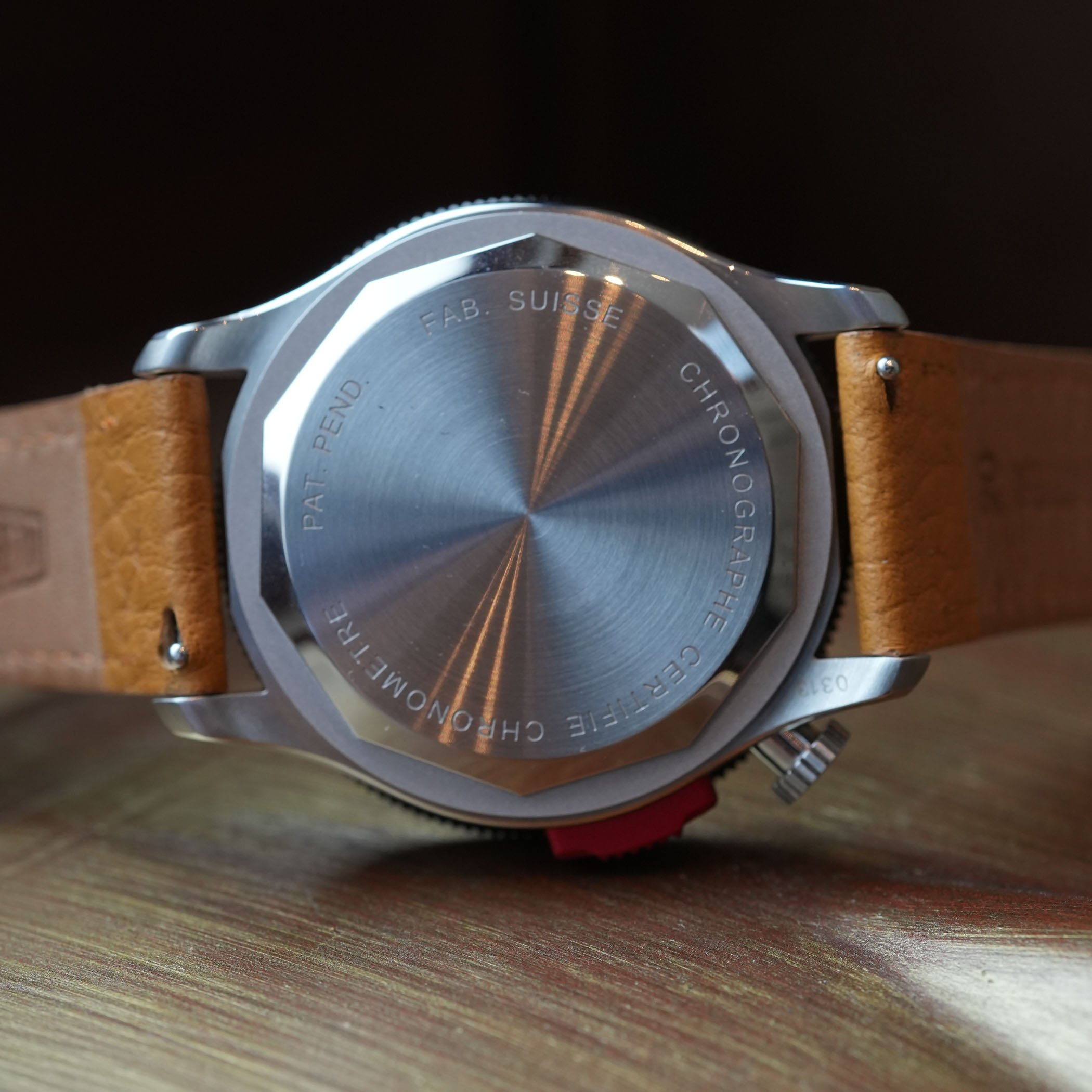
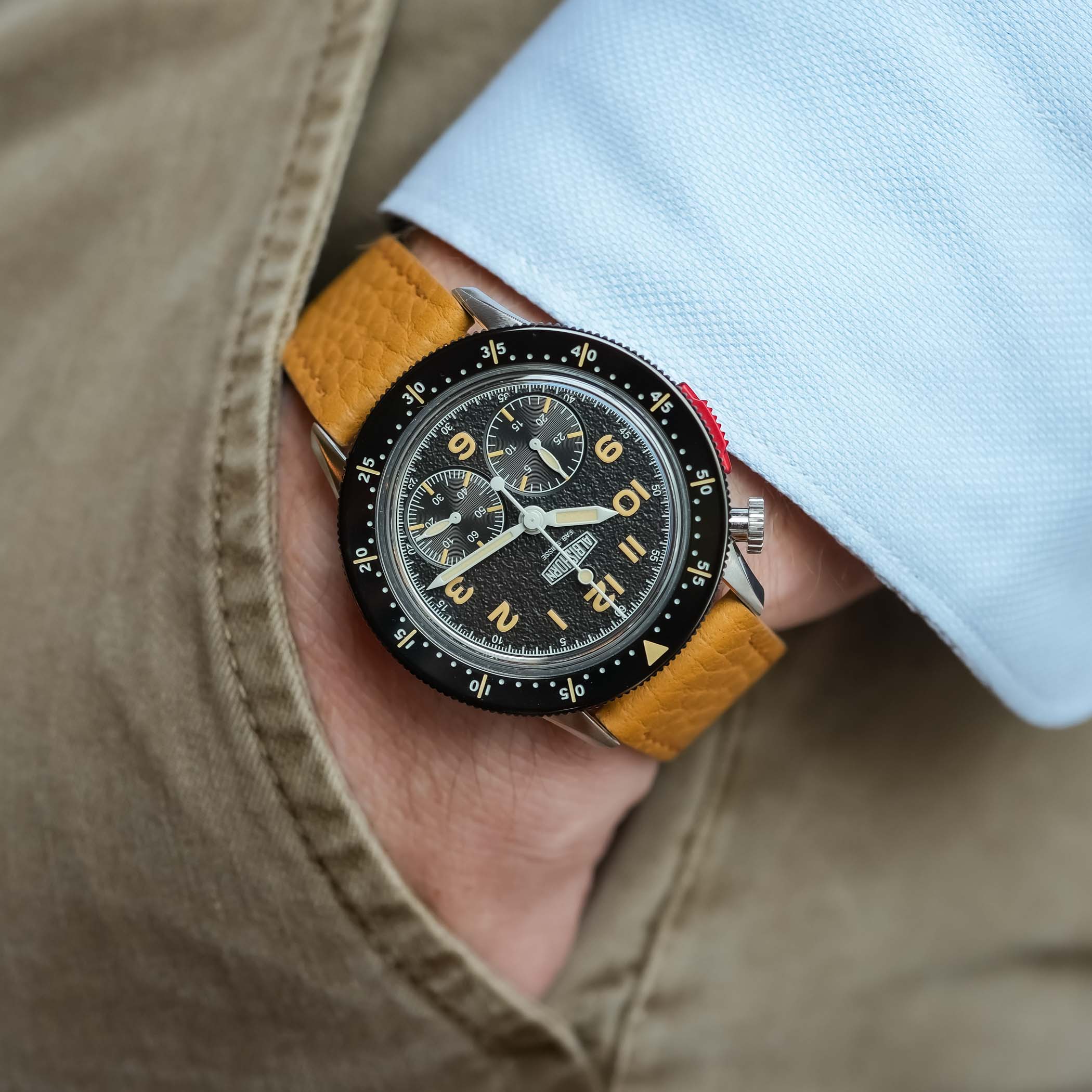
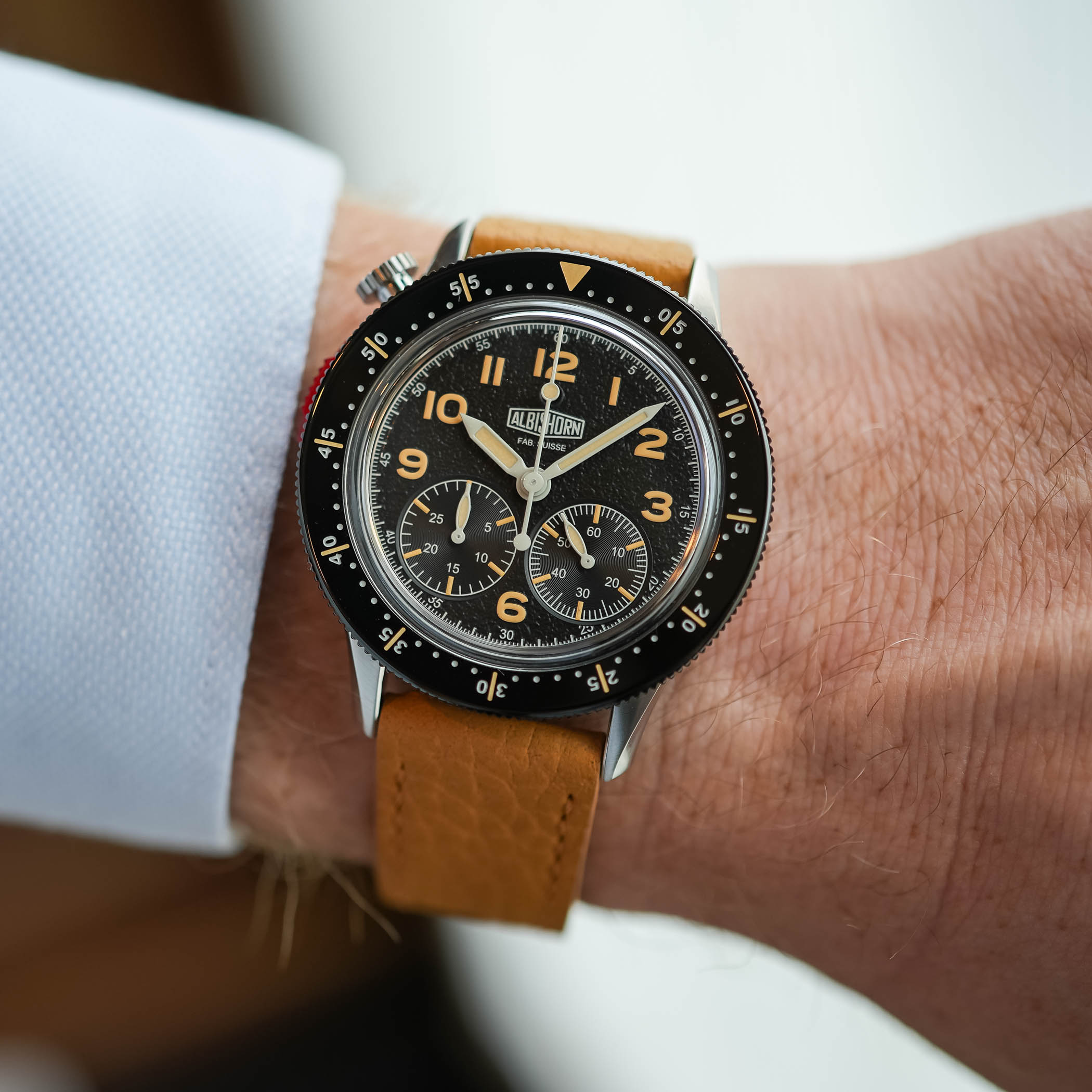
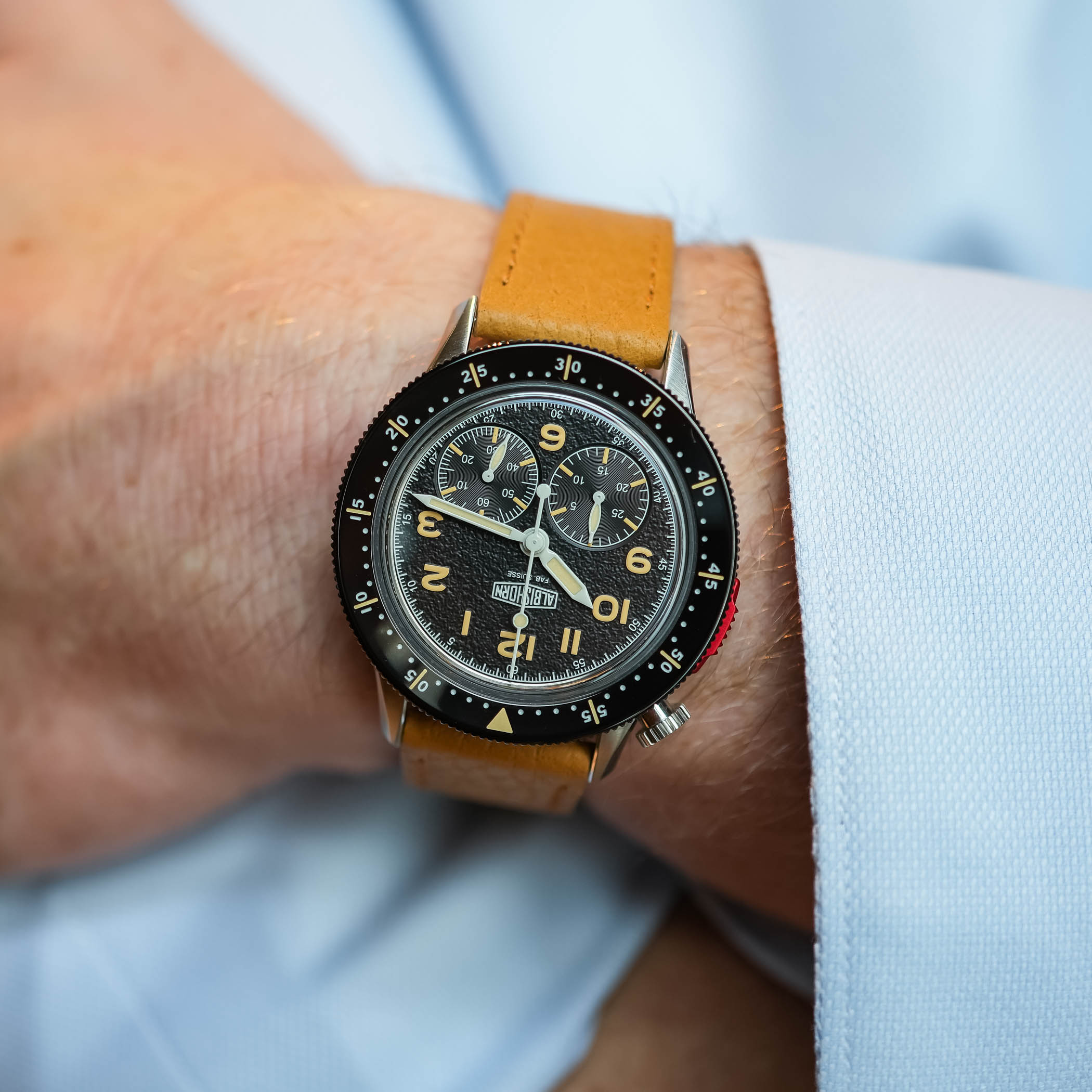
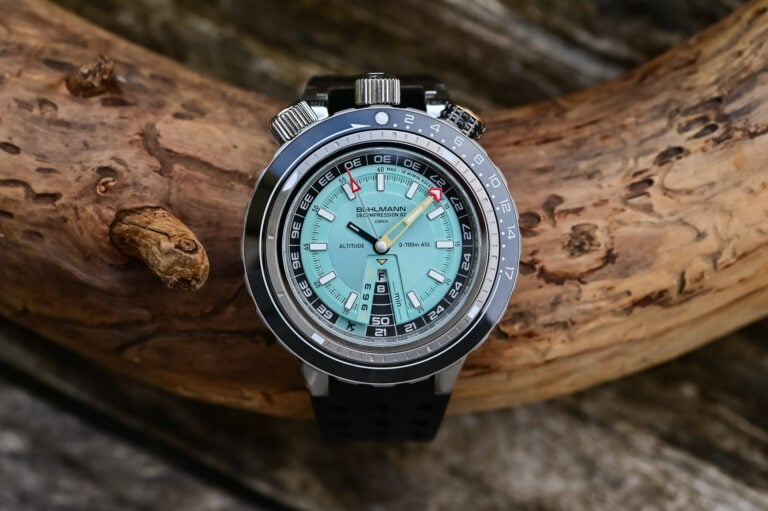
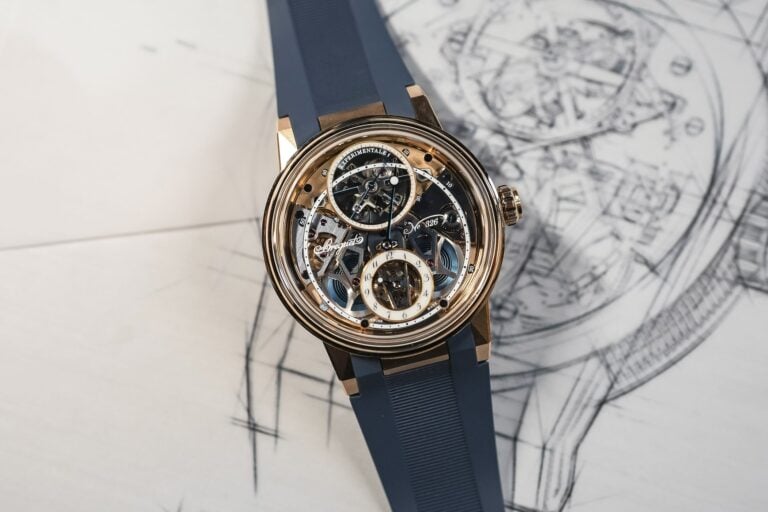
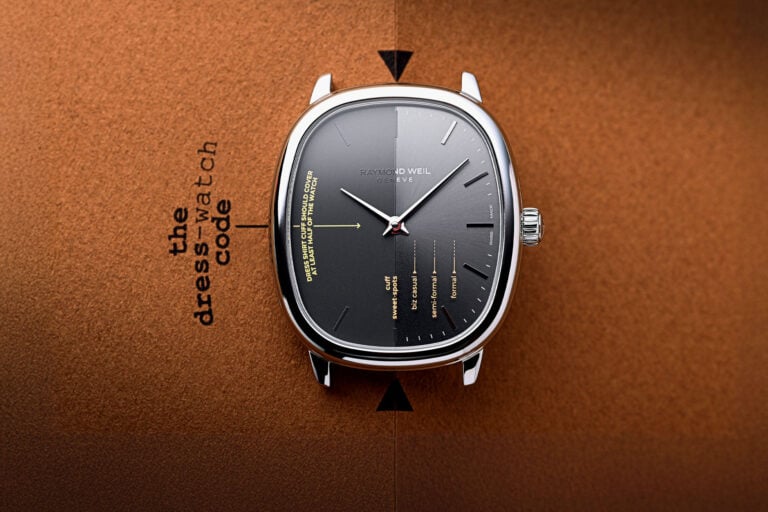
7 responses
Nice watch, with flair and easy on the eyes with what sounds like good mechanics. But they shoot themselves in the foot by charging an outrageous price for the privilege of ownership, so no thanks. Knuckleheads!
Nice looking watch however we already have the Hanhart 417 ES 1954 as the actual ancestor to the Type 20 design, this should be common knowledge in the watch industry. Hell, I can get the Hanhart reissue with column wheel flyback movement adjusted close to COSC specs for half the price.
5K (vat included) … lol
I actually like this a lot and find it very unique. For people that are complaining about the price, do other watches have a window that indicates what function the chronograph is doing? This one indicates by using three different colors. The subdial arrangement is very unique. Also the red aluminum monopusher. It also has a proper, screw on caseback.
Thanks Brice for this review. Not wanting to nitpick but…
The Type 20 chronographe « Retour en vol » was not dedicated to the French Navy but to all kind of pilots from L’Armée de l’air (Air force), L’Aéronavale (navy pilot), and the Centre d’Essais en Vol. It also appears that l’ALAT (the Army flying corps ) got some. Auricoste, Breguet and Dodane were actually endorsed by the French MoD to produce these Type 20. But if Auricoste and Dodane did it in house, Breguet asked Mathey-Tissot to build them according to its requirements.
Consequently, only Auricoste, Breguet and Dodane’s Type 20 were “OFFICIALLY” given to the french military pilots and maintened by the armies sub-contractors (Dodane, Pechoin…). Some Airain’s Type 20 (a sub brand of Dodane , like Chronofixe) were also used on operations but thanks to private initiatives as these « civil » versions of the Dodane were on sale on some military bases. The Vixa’s Type 20 were part of the compensations given to France by Germany after WW2, in fact Hanhart Flyback movement and parts assembled in France (about 4 000 Vixa produced). Also of note, Auricoste used a Lemania 2040 caliber instead of the Valjoux (Dodane, Breguet…) and about 2 000 were delivered.
Hope it helps (and sorry for the broken english)
@Crouze – you’re absolutely right with everything you’re saying here. For the sake of this article, which wasn’t about doing the full history of the Type 20s and Type XX, I’ve simplified the historical part.
But that makes me think that we should at some point create a comprehensive history of the Type 20 watches (all brands included) on MONO!
Brice, Thanks for your positive feedback 😉 For sure the Type 20 deserve a comprehensive story on your excellent site ! Learning myself on this matter for the last 30 years, there is always something new to « update » what we thought was « for sure ».
Thanks to the MONO’s team for their time and passion !